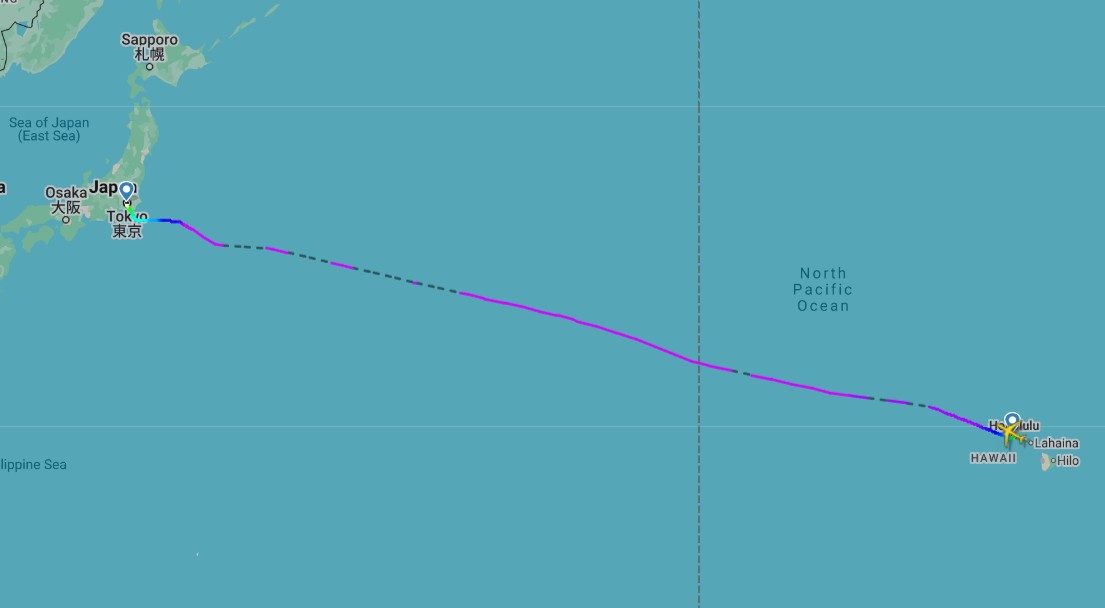A Hawaiian Airlines Airbus A330 was forced to make an emergency landing after a passenger’s mobile phone overheated and began emitting a burning odor and caught fire. The fire was quickly extinguished by the cabin crew in yet another example of mobile electronic devices overheating – a process known as #thermal runaway.’
The latest incident unfolded on April 27, 2025, as Hawaiian Airlines flight HA457 from Honolulu to Tokyo-Haneda Airport (HND) neared the end of its flight. The service was being operated by one of the carrier’s 24-strong fleet of Airbus A330-200s with registration N375HA and reportedly had 140 people on board at the time of the incident.
According to the Aviation Herald, the aircraft was at a height of 40.000ft and planning to begin its descent into Tokyo when the incident unfolded. A passenger’s mobile began to emit a strong burning odor before catching alight within the passenger’s seat. Flight attendants working in the cabin managed to discharge a fire extinguisher and retrieve the phone, securing it in a fire containment bag, which is a standard tool for handling lithium-ion battery fires on board an aircraft. There were no injuries reported by either passengers or crew.
 Flightradar24
Flightradar24
According to a Hawaiian Airlines statement, “flight attendants traced the source of the burning smell to a mobile phone that had become jammed and damaged inside a passenger seat.”
Given the severity of the event, the pilots of HA457 elected to declare an emergency and requested a priority landing at Tokyo-Haneda Airport. The aircraft eventually landed safely on Haneda’s runway 34R without further incident and taxied to the ramp. No emergency evacuation was performed.
The aircraft remained on the ground in Tokyo for an extended layover while engineers thoroughly examined the aircraft for any signs of damage caused by the fire. However, after around five hours on the ground, the aircraft was declared airworthy and later departed back to Honolulu at HA458, taking around seven hours to complete the return flight to its home base.
 Wenjie Zheng / Shutterstock
Wenjie Zheng / Shutterstock
Lithium-ion battery fires are becoming increasingly common as the widespread ownership of personal mobile devices continues to rise exponentially. However, such fires are notoriously difficult to extinguish, which has led many airlines to ban the use of power banks or battery packs, which also contain Lithium-Ion batteries, in recent months.
In January 2025, an Air Busan A321 was destroyed by fire at Gimhae International Airport (PUS) in South Korea when a passenger’s portable battery pack ignited as the aircraft prepared to depart. The plane was safely evacuated with no injuries reported to either passengers or crew. As recently as April 25, 2025, a Munich-bound Lufthansa Airbus A380 was diverted to Boston after departing Los Angeles Airport (LAX), due to an electronic tablet jammed in a business class seat
Lufthansa told AeroTime that, when the decision was made to divert the A380, registered D-AIMC, the tablet was showing “visible signs of deformation due to the seat’s movements” and the crew was concerned about the potential risk of thermal runaway that could potentially endanger the aircraft and all those onboard.



AloJapan.com